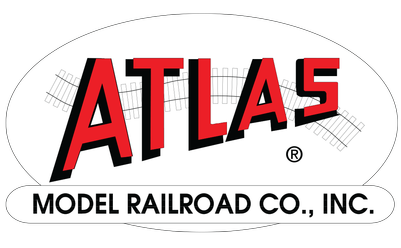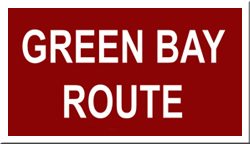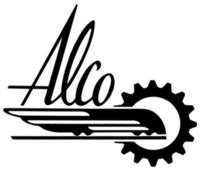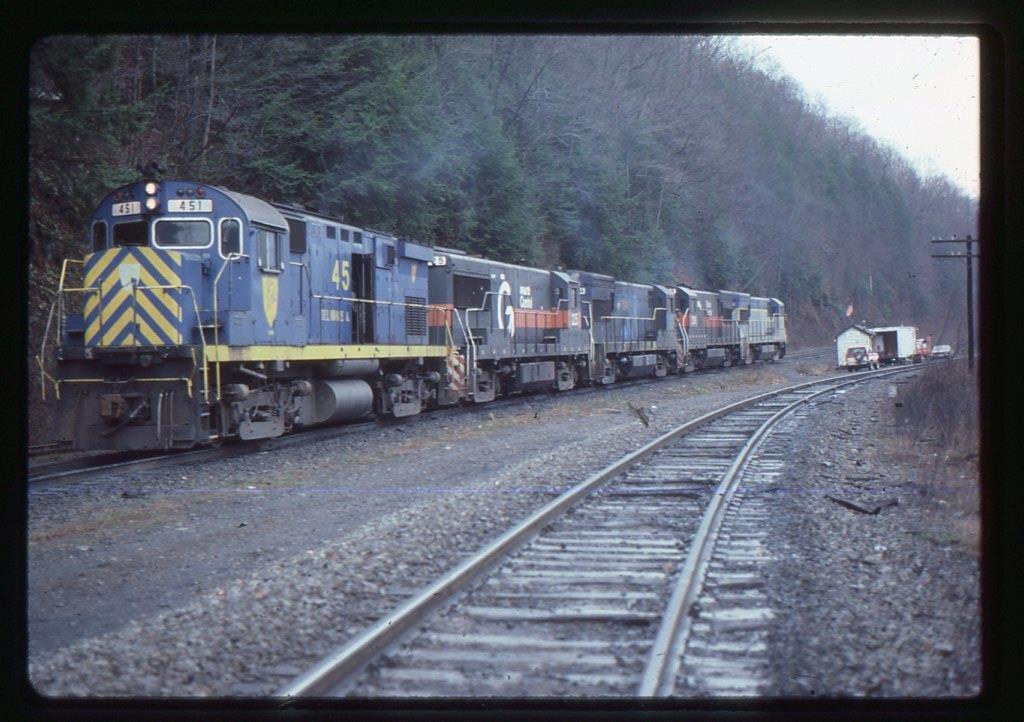Model Information: The Century 424 was a four-axle, 2,400 hp (1,790 kW) diesel-electric locomotive. 190 were built between April 1963 and May 1967. Cataloged as a part of Alco's Century line of locomotives, the C424 was intended to replace the earlier RS-27 model and offered as a lower-priced alternative to the C425. Montreal Locomotive Works also built this locomotive as MLW Century 424.
Prototype History: The ALCO Century 424 was a four-axle, 2,400 hp (1,790 kW) diesel-electric locomotive of the road switcher type. 190 were built between April 1963 and May 1967. Cataloged as a part of Alco's Century line of locomotives, the C424 was intended to replace the earlier RS-27 model and offered as a lower-priced alternative to the C425. Full data sheet on The Diesel Workshop.
Montreal Locomotive Works also built this locomotive as MLW Century 424 for Canadian railroads. Full data sheet on The Diesel Workshop.
The ALCO Century 425 was a four-axle, 2,500 hp (1,860 kW) diesel-electric locomotive of the road switcher type. 91 were built between October 1964 and December 1966. Cataloged as part of ALCO's "Century" line of locomotives, the C425 was an upgraded version of the C424. Full data sheet on The Diesel Workshop.
Read more on Wikipedia.
Montreal Locomotive Works also built this locomotive as MLW Century 424 for Canadian railroads. Full data sheet on The Diesel Workshop.
The ALCO Century 425 was a four-axle, 2,500 hp (1,860 kW) diesel-electric locomotive of the road switcher type. 91 were built between October 1964 and December 1966. Cataloged as part of ALCO's "Century" line of locomotives, the C425 was an upgraded version of the C424. Full data sheet on The Diesel Workshop.
Read more on Wikipedia.
Road Name History: The GB&W was the result of the 1896 reorganization of earlier companies connecting Green Bay, Wisconsin with the Mississippi River port of Winona, Minnesota. The line east from Green Bay to the car ferry port at Kewaunee was built as the affiliated Kewaunee Green Bay & Western. It wasn’t completely merged into GB&W until 1969. The 277 mile combined line bisected the state of Wisconsin. Railroad car ferries connected Kewaunee with the Ann Arbor, GTW, and C&O in Michigan’s lower peninsula. For a number of years, another subsidiary the Ahnapee & Western was operated as part of the GB&W but was sold to new owners in 1947.
Light rails and bridges put the GB&W about 20 years behind other railroads in steam technology. For instance, they were still receiving new 2-8-0’s in the late 20s. The biggest engines in the fleet were a half dozen light Mikados which arrived in 1937 and ’39.
In 1929, they established the Western Refrigerator Line to manage a 500 car fleet of reefers (presumably to serve the many packers of Green Bay.) Passenger service was always a low priority and ended entirely in 1941.
By 1950, they had completely dieselized, entirely with Alcos. For the second generation of diesels, GB&W concentrated on C424’s. Typically, there were 18-20 units on the roster at any one time. They would remain all-Alco to the end with first generation units set up to run long hood forward and second generation running short hood forward.
The bridge traffic created by the car ferry link to Michigan included high value auto parts. However, in the late 70’s, the car ferry traffic plummeted and GB&W began relying on paper industry traffic generated on line. In 1978 the line was purchased by Itel (yes, the per diem boxcar people.) Finally in 1993, the Green Bay & Western was merged into a subsidiary of Wisconsin Central.
Light rails and bridges put the GB&W about 20 years behind other railroads in steam technology. For instance, they were still receiving new 2-8-0’s in the late 20s. The biggest engines in the fleet were a half dozen light Mikados which arrived in 1937 and ’39.
In 1929, they established the Western Refrigerator Line to manage a 500 car fleet of reefers (presumably to serve the many packers of Green Bay.) Passenger service was always a low priority and ended entirely in 1941.
By 1950, they had completely dieselized, entirely with Alcos. For the second generation of diesels, GB&W concentrated on C424’s. Typically, there were 18-20 units on the roster at any one time. They would remain all-Alco to the end with first generation units set up to run long hood forward and second generation running short hood forward.
The bridge traffic created by the car ferry link to Michigan included high value auto parts. However, in the late 70’s, the car ferry traffic plummeted and GB&W began relying on paper industry traffic generated on line. In 1978 the line was purchased by Itel (yes, the per diem boxcar people.) Finally in 1993, the Green Bay & Western was merged into a subsidiary of Wisconsin Central.
Brand/Importer Information: In 1924 Stephan Schaffan, Sr. founded the Atlas Tool Company in Newark, New Jersey. In 1933 his son, Stephan Schaffan, Jr., came to work for his father at the age of sixteen. Steve Jr. built model airplanes as a hobby and frequented a local hobby shop. Being an enterprising young man, he would often ask the owner if there was anything he could do to earn some extra spending money. Tired of listening to his requests, the hobby-store owner threw some model railroad track parts his way and said, "Here, see if you can improve on this".
In those days, railroad modelers had to assemble and build everything from scratch. Steve Jr. created a "switch kit" which sold so well, that the entire family worked on them in the basement at night, while doing business as usual in the machine shop during the day.
Subsequently, Steve Jr. engineered the stapling of rail to fiber track, along with inventing the first practical rail joiner and pre-assembled turnouts and flexible track. All of these products, and more, helped to popularize model railroading and assisted in the creation of a mass-market hobby. The budding entrepreneur quickly outgrew the limitations of a basement and small garage operation. Realizing they could actually make a living selling track and related products, Steve and his father had the first factory built in Hillside, New Jersey at 413 Florence Avenue in 1947. On September 30, 1949, the Atlas Tool Company was officially incorporated as a New Jersey company.
In 1985, Steve was honored posthumously for his inventions by the Model Railroad Industry Association and was inducted into the Model Railroad Industry Hall of Fame in Baltimore, Maryland. In addition, Steve was nominated and entered into the National Model Railroad Association Pioneers of Model Railroading in 1995.
In the early 1990s, the Atlas Tool Company changed its name to Atlas Model Railroad Company, Inc.
In those days, railroad modelers had to assemble and build everything from scratch. Steve Jr. created a "switch kit" which sold so well, that the entire family worked on them in the basement at night, while doing business as usual in the machine shop during the day.
Subsequently, Steve Jr. engineered the stapling of rail to fiber track, along with inventing the first practical rail joiner and pre-assembled turnouts and flexible track. All of these products, and more, helped to popularize model railroading and assisted in the creation of a mass-market hobby. The budding entrepreneur quickly outgrew the limitations of a basement and small garage operation. Realizing they could actually make a living selling track and related products, Steve and his father had the first factory built in Hillside, New Jersey at 413 Florence Avenue in 1947. On September 30, 1949, the Atlas Tool Company was officially incorporated as a New Jersey company.
In 1985, Steve was honored posthumously for his inventions by the Model Railroad Industry Association and was inducted into the Model Railroad Industry Hall of Fame in Baltimore, Maryland. In addition, Steve was nominated and entered into the National Model Railroad Association Pioneers of Model Railroading in 1995.
In the early 1990s, the Atlas Tool Company changed its name to Atlas Model Railroad Company, Inc.
Item created by: CNW400 on 2025-02-18 17:13:43
If you see errors or missing data in this entry, please feel free to log in and edit it. Anyone with a Gmail account can log in instantly.
If you see errors or missing data in this entry, please feel free to log in and edit it. Anyone with a Gmail account can log in instantly.






